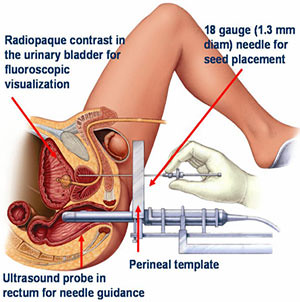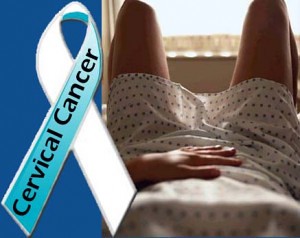
Cancer is the second cause of cardiovascular disease and death in the Western world. Although cancer is primarily a disease of the elderly with more than 60% of cancer deaths that occur in those over 65 years, cancer can strike even the youngest.
Cancer appears to occur when the growth of cells in the body is out of control and cells divide too quickly. Cancer can develop in any organ ortissues such as lung, colon, breast tissue, skin, bone or nerve.
Most common sites are:
The 24% fall down
Breast 13%
Pulmonary 13%
Colon and rectum 9%
The bladder 3%
Uterus 2.5%
The cause of cancer is believed to be a combination of genetic and outside carcinogens such as snuff, viruses, infection, asbestos, vinyl chloride, an inadequate diet.
Cancer often has no specific symptoms, so it is important to limit the riskfactors and cancer exams properly. The signs and symptoms depend on tumor location, tumor size, and what affects the organs or structures.
If the cancer spreads (metastasizes), then symptoms can appear in different parts of the body. As it grows, it begins to push on nearby organs, blood vessels and nerves. If the tumor is in a critical area, as someparts of the brain, even the smallest tumor can cause early symptoms.
But sometimes cancers start in places that do not cause any symptoms until the tumor has grown quite a bit. Tumors of the pancreas, for example, usually do not grow large enough to be heard from outside the body. By the time a pancreatic cancer causes these signs and symptoms, usually in an advanced stage.
A cancer may alsocause symptoms common to many other problems, such as fever, fatigue and weight loss. This may be due to the fact that cancer consumes most of the energies of the body and can cause the release of substances that affect metabolism.
Some lung cancers of hormone-like substances that affect levels of calcium in the blood, that affects the nerves and muscles and cause weakness and dizziness.
It is important to know that some of the general (non-specific) signs and symptomscancer, but remember to have one of these does not mean you have cancer.
Most cancers can be treated and cared for some, depending on the specific location, and stage. The earlier the cancer is, the better the prognosis.
A good example of the importance of the discovery of early cancer of the skin cancer melanoma. Skin cancer can be easy to remove if not developed in depth in the skin, and 5-year survival rate (Percentage of people who live at least 5 years after diagnosis) at this stage is nearly 100%.
The breast cancer screening with mammography has been shown to reduce the average stage of diagnosis of breast cancer in the population. Colorectal cancer can be detected by testing for fecal occult blood and colonoscopy, which reduces both the "incidence colon cancer and mortality, presumably through the detection and removal of premalignant polyps. Similarly,> Cervical cytology testing (using the Pap smear) leads to the identification and removal of precancerous lesions.
Testicular self-examination is recommended for men age 15 years to detect testicular cancer.
SIGNS AND SYMPTOMS
The pain may be an early symptom of some cancers such as bone cancer or testicular cancer.
In the long term constipation, diarrhea, or a change in the size of the stool may bea sign of colon cancer.
Painful urination, blood in urine or changes in bladder function (such as urinating more frequently or less frequently) could be related to bladder or prostate.
Skin cancers may bleed and look like sores that do not heal.
A long wound in the mouth can be a tumor of the oral cavity and must be addressed immediately, especially in patients who smoke, chew or snuff frequently consume alcohol.
Wounds inpenis or vagina may be signs of an infection or cancer early, and should not be overlooked.
Bleeding can occur either early or advanced cancer.
Blood in the sputum (phlegm) may be a sign of lung cancer.
Blood in the stool (or black or dark stool) could be a sign of cancer of the colon or rectum.
Blood in the urine may be a sign of cancer of the bladder or kidneys.
A bloody discharge from the nipple may be a signbreast cancer.
Many cancers can be felt through the skin, especially at the breast, testes, lymph nodes (glands), and soft tissues of the body. A lump or thickening may be an early sign of cancer or later.
Although they tend to have other causes, indigestion or difficulty swallowing may be a sign of cancer of the esophagus, stomach, or pharynx (throat).
A cough that will not go away may be a sign of lung cancer.
A cancerMay be suspected of a number of reasons, but the definitive diagnosis of most malignancies must be confirmed by histological examination of cancer cells by a pathologist.
TREATMENT
Once diagnosed, cancer is usually treated with a combination of surgery, chemotherapy and radiotherapy.
Radiation therapy can be used to treat almost all types of solid tumors, including brain tumors, breast, cervix, larynx, lung, pancreas, prostate, skin, stomach,uterus, or soft tissue sarcomas.
Most forms of chemotherapy target all rapidly dividing cells and are not specific to cancer cells, despite a certain degree of specificity may come from the inability of many tumor cells to repair DNA damage, while normal cells is usually possible.
Modern methods to generate an immune response against cancer include intravesical BCG immunotherapy for superficial bladder cancer and the use of interferons and other cytokines to induce an immune response in renal cell carcinoma and melanoma patients.
Analgesics such as morphine and oxycodone, and anti-emetics, drugs to control nausea and vomiting are common in patients with cancer-related symptoms. Transmission of the organism.
Advances in cancer research have made a vaccine designed to prevent cancer available. The vaccine protects against four HPV types which together cause 70% of cervical> Cancer and 90% of genital warts.
The consensus on diet and cancer is that obesity increases the risk of developing cancer. The fight against cancer of the food components are also proving to be more numerous and varied than previously thought, so patients are advised to consume more and more fresh, unprocessed fruits and vegetables for maximum health benefits.






